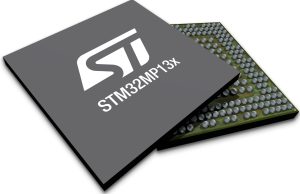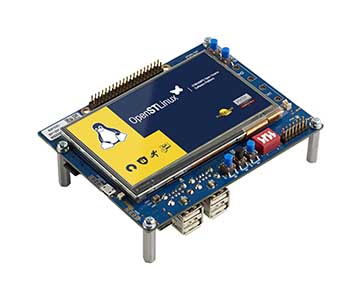Register for the STM32MP13 webinar on May 9 to jumpstart your project and get the opportunity to ask questions to our engineers
The STM32MP13 is our most cost-effective industrial-grade microprocessor, thanks to a price of fewer than four dollars. Yet, the STM32MP13 is our fastest single-core MPU thanks to a Cortex-A7 capable of reaching 1 GHz. Put simply, our engineers decided to optimize the architecture significantly to bring an industrial solution that would be more accessible. Consequently, ST removed the Cortex-M4 and the GPU found on STM32MP15 devices. In exchange, we increased the single-core performance, vastly improving the price-per-feature ratio and even adding new security features to make the STM32MP13 the first SESIP Level 3 certified MPU. The new device also supports Payment Card Industry (PCI) PTS/POI 6.0 and Arm PSA level 1 certifications.

STM32MP13: The importance of cost-effectiveness
More relevant approach

Too many teams have experienced the challenge of a low bill of materials that forces them to spend excessive time in development or support or pushes design considerations that end up blowing up budgets. Put simply, a seasoned engineer knows that a low price can have a high cost. That’s why the new STM32MP13 used an architecture designed with efficiency and accessibility in mind. For instance, we decided to remove the GPU since industrial applications at this price point rarely need one, but we added a second Ethernet port and a new pipeline to process camera images more effectively with up to 15 frames per second at 5 Megapixels.
Next Step

Those wishing to experiment with the new STM32MP13 can grab the STM32MP135F-DK. The board includes two Ethernet ports, one USB-C and four USB-A connectors, and a micro-SD card holder. It also has a 4.3-inch 480×272 display with capacitive touch capabilities, 512 MB of DDR3L, and Wi-Fi and Bluetooth modules. It also comes with a camera board so users can start creating a proof-of-concept for a computer vision application for an industrial setting.
There are also SoM makers that are shipping or will soon ship STM32MP13 modules, such as Engicam, DiGi, iWave, Phytec, or DH electronics. In many instances, a SoM can significantly jumpstart your application by providing a robust building block that can shift many of the maintenance and developments to the SoM maker. It’s also a great way to help take advantage of the open-source community by working with a SoM that upstreams its code and actively participates in the community.












